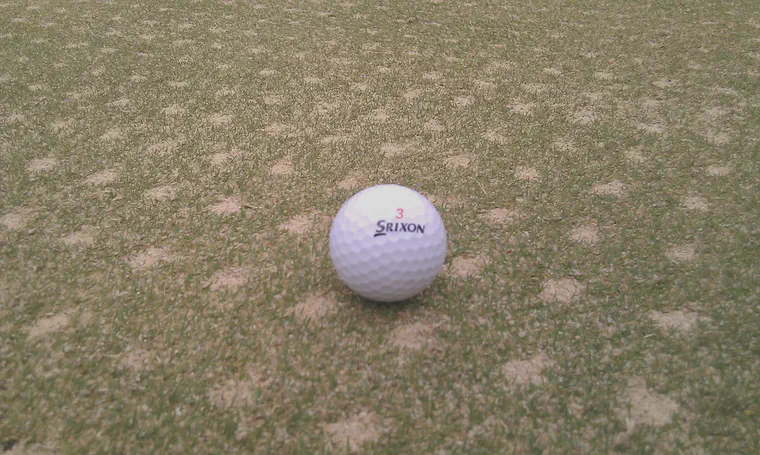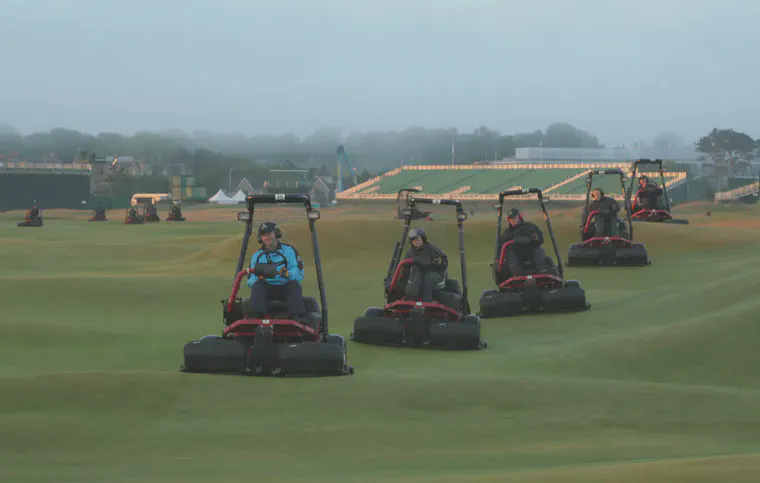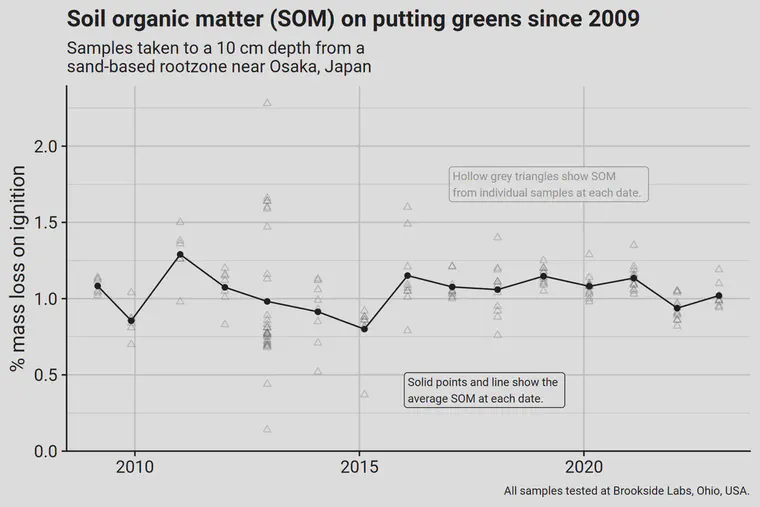Reflections on growth rate, nitrogen, and topdressing
For a few years now, when I have private discussions about the type of putting green maintenance that involves few or no holes punched in the surface and minimal sand topdressing, I often hear this response.
“Sure, that type of maintenance might work for one year, but it can’t work forever.”
I take a slightly different view, now. My thoughts about this are that if one can get the growth rate just right, it might be possible to manage like this for a long time.1 As I reflect on this subject, however, it has occurred to me that not so many years ago, my reply would have been the same: “sure, you might get away with not coring and minimal sand topdressing for one season, but it won’t last.”

I was thinking about what has happened for me to change my mind about this. I’ve gone from recommending surface area disruption (removal) of 15 to 20% per year, with the holes or grooves filled with sand, to now suggesting that if the right combination of soil conditions and growth rate can be achieved, such work may not be necessary.
A narrative came to my mind during a run past rubber trees and oil palms in southern Thailand. The examples of what I had known, or had thought, and had subsequently learned, were flashing through my mind one after the other. I jotted down this list when I was back in my office after that run.
This is what made sense to me that day, as a way to explain some of the things that have led me from the “it might work for one year” mentality to my current optimism about being able to manage like this for many years.
- Claude Crockford famously told Ben Crenshaw that Americans are trying to make grass grow, and in Australia they are trying to stop it from growing. I’d heard that quote years ago, but didn’t think about it too deeply. Naturally in many places in the USA fine turf is not the natural vegetation, so I have often justified the need to make grass grow, and all that goes along with that, as something that is necessary in certain climates.

As I saw more and more golf courses around the world, I realized that once a dense sward exists, then less growth produces better playing conditions. See links golf, for example.
ATC has many soil testing clients, especially in Japan, with a long time series of soil organic matter (SOM) measurements. I noticed that the SOM for samples collected to a 10 cm (4 inches) depth was staying relatively constant over a long time, or even decreasing over time, despite there being less core removal and less sand topdressing than I had been recommending.

I noticed that tropical forests can produce a lot of biomass with no fertilizer whatsoever.
I saw fine turf at places such as Tom Cook’s lawn, which has had no fertilizer for fifteen years.
After I realized that clipping volume was useful, I started making calculations of how much N fertilizer would be required to produce a certain quantity of clippings. That turns out to be a low amount of N. If one can apply N in a way that results in a high nitrogen use efficiency (NUE), then the amount of N fertilizer required to produce the growth rate necessary for fine golf course turf is lower than I once thought.
On a trip to Australia in 2011, I visited a lot of golf courses and saw what the bentgrass turf looked like, and I was surprised in a few cases by how little N was applied to produce those surfaces.
I kept checking N rates for bentgrass greens in Japan, and I came to realize that the amount predicted by a growth potential (GP) model with the maximum N set at 3 g N/m2/month was more than was actually being applied. I saw a lot of good greens that had N applied at a rate that was closer to a 1.5 to 2 g monthly link to GP. New research by Bekken and Soldat on golf course nitrogen use efficiency comes up with a 2.3 g value for cool-season putting greens.
In a place like Sydney, Australia, or Tokyo, Japan, running GP models for cool-season grass with the maximum set at 3 g N produces an annual N rate that is considerably higher than what I saw turf managers using to get good results.
It’s evident that with less growth there is less total organic material produced in the soil as well. And that would lead to less coring and less sand topdressing being necessary too.
That’s what went flashing through my mind one day.
By a long time, I mean indefinitely, and I find it useful to keep track of above ground growth with clipping volume, keep track of below ground growth with OM246 total organic material measurements, the amount of sand applied, and the amount of N applied. If you know those four values, and also keep records of playing conditions (I recommend green speed, bobble test, and firmness), you quickly find out if such an approach is working, and if it is not working, it will be apparent what maintenance practices need to be changed, and in what direction they need to change. Chris Tritabaugh wrote about this and explained with examples how he applies such an approach at Hazeltine National GC. ↩︎